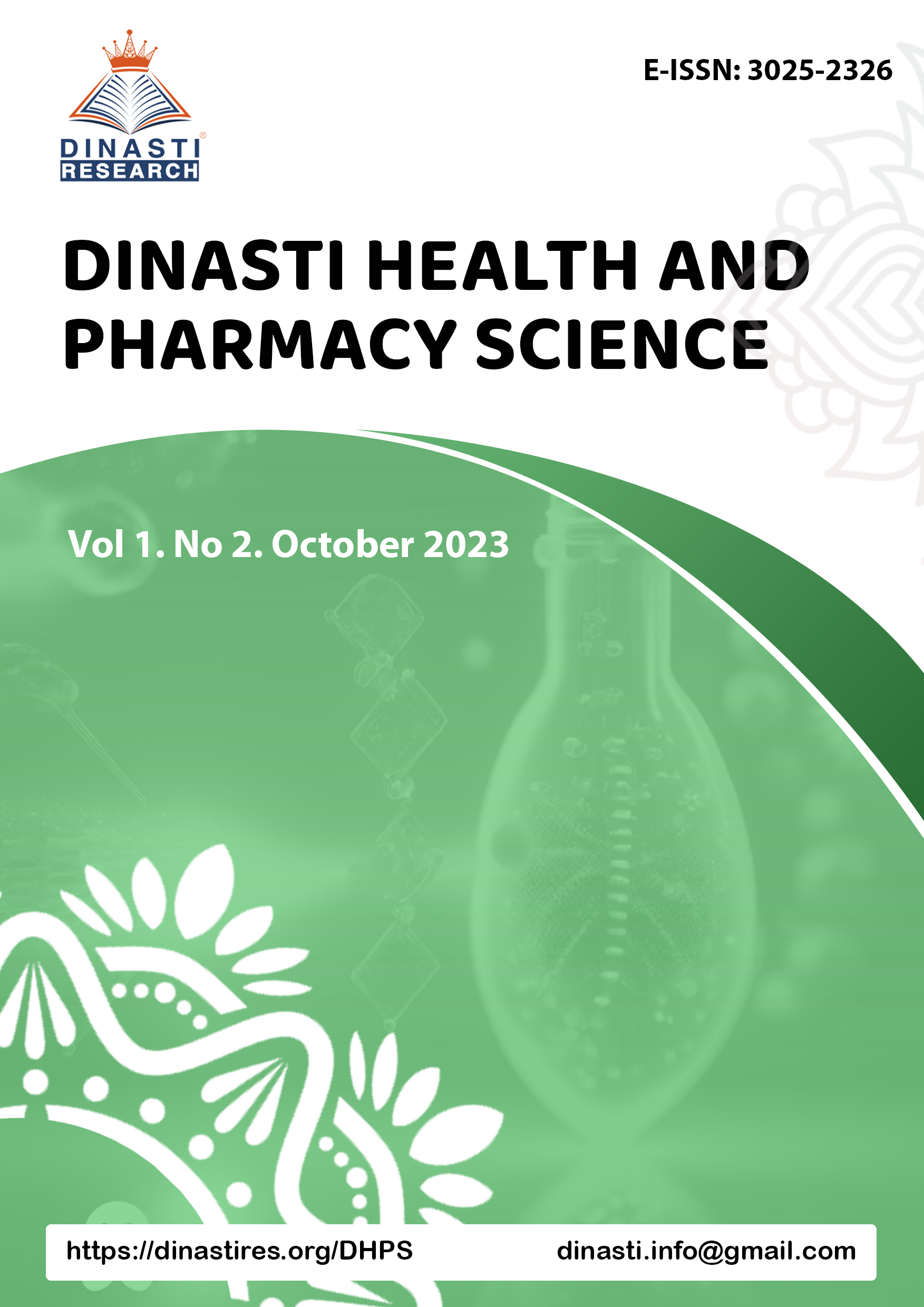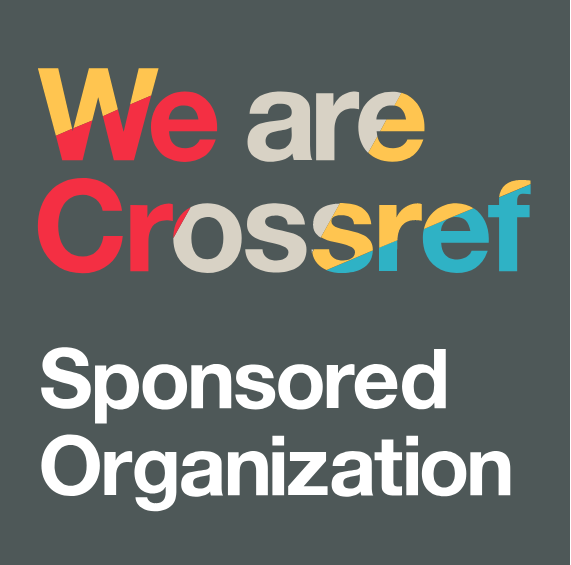The Influence of e-Health Literacy and Anxiety on Cyberchondria In Early Adulthood Internet Users at the Pulogadung Police Dormitory
DOI:
https://doi.org/10.38035/dhps.v1i2.1624Keywords:
E-Health Literacy, Anxiety, CyberchondriaAbstract
This study aims to determine whether there is an influence of e-health literacy and anxiety on cyberchondria in early adult internet users at the Pulogadung Police Dormitory. This study uses a quantitative method with a purposive sampling technique with predetermined respondent criteria. The questionnaire was distributed to 202 respondents who had entered early adulthood with an age range of 18-40 years, domiciled at the Pulogadung Police Dormitory, internet or social media users, and had searched for health information on the internet. The instruments used in this study were the electronic-Health Literacy Scale (e-HLS), Beck Anxiety Inventory (BAI), and Cyberchondria Severity Scale (CSS). Data processing in this study used the Kolmogorov-Smirnov normality test and hypothesis testing used multiple linear regression tests. Based on the test results of the e- health literacy variable on cyberchondria, the p value = <0.001 (p <0.05) with an R2 value = 31.5%, which means that the first hypothesis is accepted and there is a significant influence. On the anxiety variable on cyberchondria , the P value = <0.001 (P <0.05) with an R2 value = 35.9%, which means that the second hypothesis is accepted and there is a significant influence. In addition, the results of the multiple linear regression test show that e-health literacy and anxiety have an effect on cyberchondria in early adult internet users at the Pulogadung Police Dormitory.
References
Adinda, R. S. (2023). Academic Self-Efficacy Dan Kecemasan Mengerjakan Skripsi Pada Mahasiswa Universitas Kristen Satya Wacana (Doctoral dissertation).
Aiken, M., Kirwan, G., Berry, M. & O’Boyle, C. (2012). The age of cyberchondria. Royal College of Surgeons in Ireland Student Medical Journal, 5, 71–74.
Alwisol. (2011). Psikologi Kepribadian. Malang; UMM Press.
APJII. (2024). Laporan Survei Internet APJII 2024. Asosiasi Penyelenggaraan Jasa Internet Indonesia. 1-167. https://apjii.or.id/survei (diakses pada tanggal 6 Juni 2024).
Aulia, A. (2019). Uji Validitas dan Reliabilitas Instrumen Cyberchondria Severity Scale Untuk Menilai Kecemasan Terhadap Kesehatan Fisik Akibat Internet pada Mahasiswa Fakultas Kedokteran, Kesehatan Masyarakat, dan Keperawatan Universitas Gadjah Mada di Yogyakarta (Doctoral dissertation, Universitas Gadjah Mada).
Bailey, S. C., O’Conor., Bojarski, E. A., Mullen, R., Patzer, R. E., Vicencio, D., Jacobson, K. L., Parker, R. M., & Wolf, M. S. (2015). Literacy disparities in patient access and health-related use of Internet and mobile technologies. Health Expectations, 18(6), 3079-3087.
Bajcar, B., Babiak, J., & Olchowska-Kotala, A. (2019). Cyberchondria and Its Measurement. The Polish Adaptation and Psychometric Properties of the Cyberchondria Severity Scale CSS-PL. Psychiatry, Vol. 53 No. 1, 49-60.
Baumgartner, S. E., & Hartmann, T. (2011). The Role of Health Anxiety in Online Health
Information Sarch. Cyberpsychology, Behavior, and Social Ntworking, 14(10), 613- 618.
Dennis, D., Radnitz, C., & Wheaton, M. G. (2021). A Perfect Storm? Health Anxiety, Contamination Fears, and COVID-19: Lessons Learned from Past Pandemics and Current Challenges. In International Journal of Cognitive Therapy. Springer Science and Business Media Deutschland GmbH.
Dhir, A., Yossatorn, Y., Kaur, P., & Chen, S. (2018). Online social media fatigue and psychological wellbeing—A study of compulsive use, fear of missing out, fatigue, anxiety and depression. International Journal of Information Management, 40, 141- 152.
Fischer, K. (2008). Ramen Noodles, Rent and Resumes : An After-College Guide to Life. California: SuperCollege LLC.
Ghanbari, S., Ramenzankhani, A., Montazeri, A., & Mehrabi, Y. (2016). Health Literacy Measure for Adolescents (HELMA): Development and Psychometric Properties. PloS ONE, 11(2), e0149202.
Guo, S., Amstrong, R., Waters, E., Sathish, T., Alif, S. M., Browne, G. R., & Yu, X. (2018). Quality of health literacy instruments used in children and adolescents: a systematic review. BMJ Open, 8(6).
Hurlock, E. B. (2022). Psikologi Perkembangan: Sebuah Pendekatan Sepanjang Rentang Kehidupan (Edisi Kelima). Jakarta: Erlangga.
Joki?-Begi?, N., Mikac, U., ?uržik, D. et al. (2019). The Development and Validation of the Short Cyberchondria Scale (SCS). J Psychopathol Behav Assess 41, 662–676.
McElroy, E., & Shevlin, M. (2014). The Development and Initial Validation of the Cyberchondria Severity Scale (CSS). Journal of Anxiety Disorders, 28, 259-265.
Mesko, B., Drobni, Z., Benyei, E., Gergely, B., & Gyorffy, Z. (2017). Digital health is a cultural transformation of traditional healthcare. Mhealth, 3, 38.
Norman, C. D., & Skinner, H. A. (2006). e-Health literacy: essential skills for consumer health in a networked world. Journal of medical Internet research, 8(2), e506.
Nurdifa, A. R. (2020). Survei: 5 Hal Paling Dicemaskan saat Quarter Life Crisis. from GENSINDO: https://gensindo.sindonews.com/ (diakses pada tanggal 23 November 2023).
Rachma, N. A., & Oktaviana, M. (2024). Pengaruh Electronic Health Literacy terhadap Cyberchondria pada Mahasiswa Laki-Laki Sistem Informasi Universitas X. Innovative: Journal Of Social Science Research, 4(4), 6766-6776.
Ramadhan, W. (2020). Quarter Life Crisis dan Balada Kegalauan Anak, from kreativv.id: https://kreativv.com/ (diakses pada tanggal 23 November 2023).
Seçkin, G., Yeatts, D., Hughes, S., Hudson, C., & Bell, V. (2016). Being an Informed Consumer of Health Information and Assessment of Electronic Health Literacy in a National Sample of Internet Users: Validity and Reliability of the e-HLS Instrument. Journal of Medical Internet Research, 18(7), e161.
Simanjuntak, E. J., & Princen, P. (2022). Pengaruh Kecemasan dengan Cyberchondria di tengah Pandemi Covid-19. MANASA, 11(1), 34-47.
Starcevic, V. (2017). Cyberchondria: Challenges of Problematic Online Searches for Health- Related Information. Psychotherapy and Psychosomatics, Vol. 86, 129-133.
Starcevic, V., & Aboujaoude, E. (2015). Cyberchondria, Cyberbullying, Cybersuicide, Cybersex: "New" Psychopathologies for the 21st Century? World Psychiatry, 97-100.
Starcevic, V., & Berle, D. (2013). Cyberchondria: Towards a Better Understanding of Excessive Health-Related Internet Use. Expert Reviews, Vol. 13 No. 2, 205-213.
Sugiyono. (2015). Metode Penelitian Kuantitatif, Kualitatif, dan R&D. Alfabeta, CV.
Sunarsih, D. (2009). Hubungan Tingkat Religiusitas dengan Kecemasan Istri ABRI yang Ditinggal Suami ke Daerah Konflik.
Tennant, B.M Stellefson, M., Dodd, V., Chaney, D., Paige, S., & Alber, J. (2015). eHealth Literacy and Web 2.0 Health Information Seeking Behaviors Among Baby Boomers and Older Adults. J Med Internet Res, 17(3), e70.
Zheng, H., Chen, X., & Fu, S. (2020). An exploration of determinants of cyberchondria: A moderated mediation analysis. Proceedings of the Association for Information Science and Technology, 57(1), e214.
Downloads
Published
How to Cite
Issue
Section
License
Copyright (c) 2025 Bagas Rukmana, Rilla Sovitriana

This work is licensed under a Creative Commons Attribution 4.0 International License.
Copyright :
Authors who publish their manuscripts in this journal agree to the following conditions:
- Copyright in each article belongs to the author.
- The author acknowledges that the DHPS has the right to be the first to publish under a Creative Commons Attribution 4.0 International license (Attribution 4.0 International CC BY 4.0).
- Authors can submit articles separately, arrange the non-exclusive distribution of manuscripts that have been published in this journal to other versions (for example, sent to the author's institutional repository, publication in a book, etc.), by acknowledging that the manuscript has been published for the first time at DHPS.


























